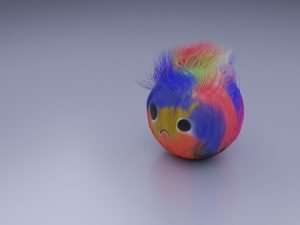Abstract art is a term used to refer to non-representational art. This can include anything from a landscape that includes no recognizable elements, to a painting that contains very few objects.
Abstract art is a great option for those who want something interesting on their walls but don’t have the time to go through many galleries and try and find something they like. Abstract art can be one of the more expensive types of paintings when considering each piece, but it is less expensive than some of the other art forms out there.
Trying to figure out how to collect abstract art can be very daunting due to the amount of artists and styles out there in the world. You should start by deciding how you want your collection to look and feel. Do you want everything in your collection to look similar? If so, you may want to decide what type of medium you are looking for. For example, you may be looking for all graphite or all pastels or all oil paintings. You will also want to consider where you would like your abstract art hung in your home or office space before you begin your search for pieces that are going to fit in with what you already have and give off the look that you were hoping for.
You can find examples of abstract art everywhere around you
Abstract art is one of the most popular types of fine art today. It is valued for its originality, freedom from imitation and convention, and for its expressive power. It can be created in almost any medium, including painting, sculpture, collage, photography, printmaking and drawing. The abstract art market has a global reach and extends from the multi-million dollar prices commanded by the works of abstract expressionists like Jackson Pollock to the affordability of art prints and other items associated with artists such as Gustav Klimt.
Artists who create abstract art are free to express themselves in ways that break free of tradition and social or cultural norms. This is often a liberating experience for artists but it can be difficult to identify what makes an artist’s work abstract rather than representational. This article will guide you through the issues surrounding this complex subject and look at how to acquire works that have been described as abstract art.
Artists have explored abstraction since long before the term was coined in 1915 by the poet Robert Delaunay to describe his experiments in colour with his wife Sonia Delaunay-Terk. The word comes from the French verb abstraire, which means “to extract” – “abstracted” meaning removed from reality.
The term was
Abstract art is a modern art movement that began in the early 20th century. The movement developed in reaction to the realism of Impressionism and Expressionism, which focused on the depiction of the visible world. The movement was spearheaded by Wassily Kandinsky, Robert Delaunay and Kazimir Malevich, who believed that art should capture “spirit” as much as “matter.”
Towards this end, abstract artists sought to express spiritual or emotional states through the use of visual elements such as abstract forms and colors. Others, such as Piet Mondrian, were more interested in producing neutral geometric compositions.
The movement spread across Europe and later to America during the first half of the 20th century. It was instrumental in the development of Cubism, Futurism and Constructivism, which were closely related to abstraction. Abstract art remains popular today — with prices for many examples ranging into six-figure territory — although it’s perhaps not quite so dominant as it once was
The term “abstract” refers to a broad category of visual styles that express emotion or ideas without relying on a literal interpretation of reality, which is what true realism aims to do. In fact, an abstract artist may use realistic elements — but they’re often distorted or exaggerated so they no
Abstract art is a modern art which does not represent any object or a particular person. It is a work of art which has no literal meaning, but is rather the result of imagination and creativity.
The abstract art is a creation of artists whose inspiration and imagination are limited only by their skills and creativity. The works of abstract artists provide some kind of entertainment by inspiring viewers to think or feel in a different way. Artists use color, composition, texture and other elements to create an abstract painting.
Abstract art is not a style or an idea, it is a way of creating art. It’s an attempt to express ideas and emotions that can’t be represented by real life.
Abstract art is very versatile and it can be made in many different styles and techniques. Often abstract art is made by artists who are interested in the creative process rather than the final product. They are more interested in expressing themselves through their artwork than displaying it for others to admire.
Abstract art is often appealing to those who like minimalism because abstract art tends to focus on basic elements and shapes such as lines and squares. However, it doesn’t always have to be so simple. Abstract artists can use color, texture and other visual elements to create a more complex piece of artwork.
Abstract art has been around since the 20th century, but it didn’t become popular until about the 1960s when American pop-art started becoming more mainstream. The most famous abstract artists include Wassily Kandinsky, Mark Rothko, Jackson Pollock, Robert Rauschenberg, Salvador Dali and Andy Warhol.
The general trend in art during the 20th century was towards abstraction.**
Abstract art is artwork that employs a visual language of form, shape, color and line to create a composition which may exist with a degree of independence from visual references in the world. Abstract art is not synonymous with modern art, and it is not even synonymous with non-representational art. Some paintings wholly abstract in subject matter are not abstract in style – for example the work of Wassily Kandinsky – and vice versa. It is also often used as a pejorative term when applied to visual arts such as figurative painting and non-figurative sculpture. The term is also sometimes used to refer more specifically to works created from about 1910 through the 1940s (c.1910–1940), and was initially meant as a derogatory term given to work which was less abstract, i.e., more representational than abstract art produced in other times or places.
A major tenet of abstract art is that the work must provide an immediate sensory experience; it should be accessible intuitively without intellectual mediation. Another tenet of abstract art is that the work should be concerned only with giving shape to ideas, forms which reside in the mind, but not depict any recognizable objects or figures



